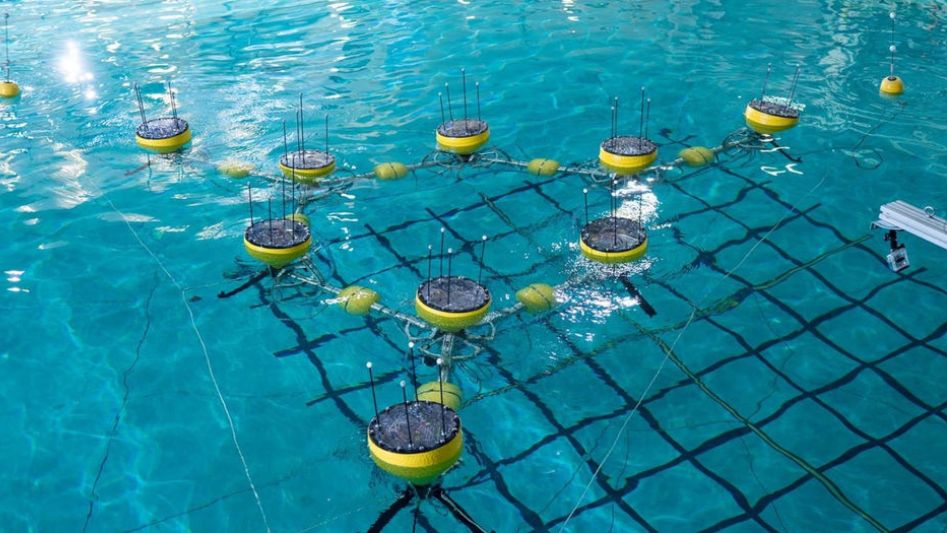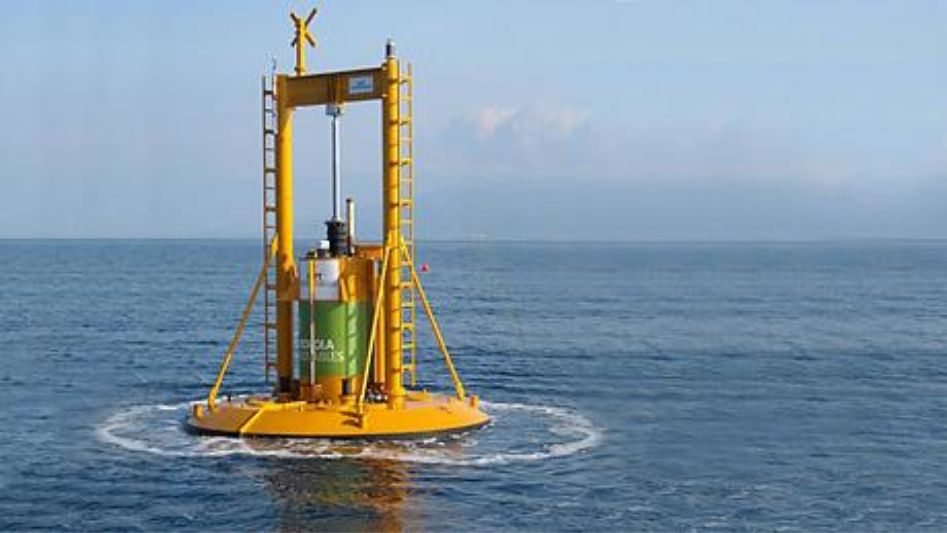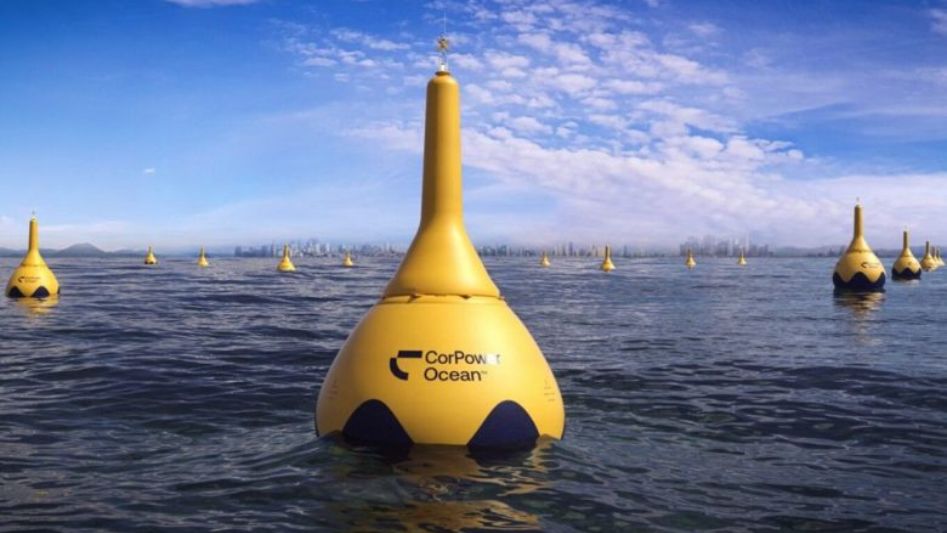Energy storage is an essential component of any reliable electricity grid. This article explores the benefits of storing energy in the ocean and how it might be possible.
Table Of Content
Storage batteries are the future of renewable energy. Energy storage is essential for intermittent renewables like solar and wind to be practical. One may think about lithium-ion batteries, but they are currently too costly to be used for really long-term storage. The biggest battery systems rely on pumped hydro storage, but this kind of system can only be used in places with access to both vast bodies of water and significant elevation changes. What if we could convert the water in the seas and lakes into a battery? The oceans hold more than 96% of the world’s water. The technologies presented here are intriguing, but before we make any decisions, let’s see if we can narrow the field.

No one should be surprised by my apparent interest in various forms of energy storage at this time. Innovative energy storage methods are crucial for the renewable energy transition away from fossil fuels. Offshore wind and large-scale solar technologies have a significant challenge when it comes to storing their energy, as I’ve indicated in prior videos, and the current Levelized Cost of Storage (LCOS) of newly-installed grid-scale lithium batteries is between $131 per MWh and $232 per MWh. Some scientists and businesses are working to create underwater storage devices that can convert the sea and lakes into batteries in an ongoing effort to reduce storage costs. But how effective are they, really?
Researchers at the International Institute for Applied Systems Analysis have devised a first option they term buoyancy energy storage technology (BEST) (IIASA). To illustrate, picture yourself at the beach or in the pool, trying to submerge a ball. Since air is less dense than water, it must take a lot of power to keep the ball submerged, right? The idea underpinning BEST is shown by the ball’s ability to store potential energy when submerged in water. With BEST, there is no ball; rather, a platform is lowered to the sea bottom and linked to a network of high-density polyethylene pipes that are pressurized with air or hydrogen.
When combined with solar or wind turbines in the ocean, BEST provides the most efficient energy solution. Electricity generated by the floating solar power plant or the offshore wind turbines powers electric motors, which then drag the buoyant tubes down to the ocean bottom, where the energy may be stored. At times when power is required on the grid, the tubes are released, and the upward force they generate pushes the motor in reverse, causing it to function as a generator and inject electricity into the grid.
After modeling the system and doing an economic analysis, the researchers found that the system’s performance might be very good at storing energy from offshore wind farms located near coasts and islands with no mountains.
The bad news? how much it will cost. They calculated a levelized cost of storage of $496/MWh using commercially available components; this is rather pricey in comparison to lithium-ion batteries. There are, however, subtleties to that figure. By investing in the development of novel materials and technologies for the BEST system rather than relying on off-the-shelf components that aren’t optimal for the purpose, the LCOS may be reduced to $50/MWh, allowing the system to store energy on a weekly cycle, as confirmed by the researchers. There are, however, several massive assumptions that underpin the notion of a tenfold savings. Until we do further fine-tuning, we can’t give you a firm price. Another issue is the high cost of installing a BEST system, which may range from $4,000 to $8,000 per kW, compared to $1,600 for a wind turbine and $1,200 for a 4-hour lithium battery system.
While there is still work to be done on the BEST system, an innovative hydro-pneumatic energy storage system is being developed by the Netherlands-based business FLASC B.V., a spin-off of the University of Malta. A hydro-pneumatic liquid piston, operated by a bidirectional pump that may also function as a turbine, stores renewable energy in a device called a Floating Liquid Piston Accumulator that utilizes seawater under compression, or FLASC for short. It is suitable for integration into a floating solar array or wind turbine.
In this setup, ocean water is pumped into a sealed container using renewable energy, compressing a measured amount of air. When there is a sudden increase in the demand for electricity, the system permits compressed air to force water through a hydraulic turbine generator, reclaiming the power that had been previously stored.
The system may be implemented in a number of different ways, including totally on the floating platform, partially on the floating platform, or submerged below the surface. Between 2017 and 2019, the first installation technique was put through its paces in a controlled trial. The second variety will be used as a test bed for a massive floating complex in 2022. An industry-leading subsea engineering service provider is now conducting tests on the whole subsea installation for oil and gas uses and shore-based offshore wind farms. The potential for FLAC to be used in natural gas liquefaction, reverse osmosis desalination, and offshore green hydrogen generation is also being investigated by the business.
The ocean is used as a heat sink; thermodynamic efficiencies of more than 95% are attained, and the system is effective even in shallow water (from 20 to 30 meters). Plus, each system is predicted to live for more than 20 years while saving you anywhere from 20% to 50% on expenditures.
When compared to a facility that stores lithium-ion batteries, how long does FLACS last? Using the company’s own cumulative damage modeling methods, researchers determined that replacing the lithium-ion batteries used in the project four times during its projected 25-year lifespan would be necessary to effectively mitigate wind turbine intermittency. An equivalent FLACS system may endure for the life of the project with just the usual offshore maintenance. Economically, a FLACS system would save around €500,000 per MWh (about $554,000 per MWh) over the course of its lifetime, and that’s without factoring in the time and money needed to replace the battery systems. The technology is still in its infancy, but the firm is developing a demonstration prototype at a 1:10 scale. A lot of work has to be done before these technologies can be widely used to store energy, but the future seems bright.

What about hydropower from underground storage tanks?
This setup is conceptually comparable to on-land pumped-storage hydroelectric plants. When the supply of energy exceeds the demand, water is pumped to a reservoir at a higher elevation and then released to operate turbines at a lower elevation. In undersea pumped storage, a water-filled enclosed vessel is placed on the bottom, making the power plant itself part of the water. When power is plentiful, the ship’s water is pumped out using electricity, creating a near-vacuum within. When that energy is required, the water is released back into the vessel and flows through a hydraulic turbine to create clean power.
The technology takes advantage of natural water pressure to generate electricity with few downsides, including little impact on the surrounding environment, no degradation of water quality, no limits on water level or temperature, and no need to pump or store water. When the vessels are at near-vacuum and the system has 100% of its stored energy, there is a great deal of power available. The pressure rises by around one atmosphere (atm, or about 1 bar) for every 10 meters of depth. It is extremely close to conventional pumped hydro storage, since some systems are meant to run at pressures exceeding 75 bars with an efficiency of 70–80%.
Expanding the capacity of these undersea storage systems only requires adding additional boats and energy wires. Furthermore, unlike traditional pumped hydro storage, underwater reservoirs do not require land in mountains or valleys to be built.In addition, they don’t suffer the same evaporation losses as open reservoirs do.
The Stored Energy at Sea project (or StEnSea for short) was the pioneering effort to put this theory into action. Professor Schmidt-Böcking and Professor Gerhard Luther, both named Dr. Luther, first came up with the concept in 2011 and subsequently filed for a patent on it. Together with Hochtief Solutions AG, researchers at the Fraunhofer Institute for Energy Economics and Energy System Technology created a proof-of-concept before the year’s end. Constructing hollow spheres with a 30-meter diameter on the seafloor at a depth of 700 meters would serve as the lower reservoir in a pumped storage system that would utilize the sea itself as the higher reservoir.
In their 2012 business strategy, they projected an installed kW cost of €1,238 (approximately $1,366).On the other hand, typical pumped hydropower facilities back then cost something in the range of €1,300/kW to €1,600/kW (about $1,434/kW to $1,765/kW).
After receiving initial funding in 2013, the StEnSea project began developing feasibility studies in tandem with the University of Stuttgart. It took another three years until a 3-meter-diameter, 1:10-scale replica was constructed and tested in a lake near Überlingen, Germany.
After doing simulations and pressure testing, the team determined that their design would hold up to the test of time to a depth of roughly 700 meters, where the pressure would be about 70 bar, utilizing pressure-resistant materials. When charged, a single sphere can store 20 MWh of energy, or 5 MW for four hours. Furthermore, the team’s analysis showed that an undersea energy storage system comprised of 80 spheres could generate up to 400 MW at a cost of €0.04 to €0.20 per kWh ($44–$220/MWh). an affordable choice.
In a very similar effort, MIT researchers used hollow concrete spheres 30 meters in diameter with 3-meter-thick walls and hundreds of tons in total mass. This feature may make them a viable alternative for use as moorings for offshore wind farms. It was estimated that a single sphere would cost $12 million, despite the fact that it could store up to 6 MWh of power at a depth of 400 meters (1,312 feet). With this in mind, the final cost of sphere energy storage is estimated to be around $0.06/kWh, or $60/MWh.A further reasonably priced choice
Ocean Grazer, a Dutch firm, earned the Best of Innovation award at CES 2022 for their work constructing a utility-scale offshore energy storage system. Eco-friendly utility-scale energy storage at up to a GWh scale is now possible thanks to the Ocean Battery. Instead of pumping water directly into the ocean, water is stored in flexible bladders that are paired with a submerged concrete vessel. If there’s a need for energy, water will be pushed from the bladders into the low-pressure reservoir, where it will turn several turbines to generate power.
CEO of Ocean Grazer, Frits Bliek, remarked
The longest discharge times in the utility industry only take half an hour. When bulk shifting is needed, for instance, a lower power-to-storage capacity may be made. Because there is zero self-discharge, you can keep the juice flowing for as long as you choose. Bliek, Frits.
The Ocean Battery has an advantage over the StenSea project’s technology in that it is an enclosed system. Steel, concrete, and rubber/PVC, which can be found in almost any country, are used to construct the Ocean Battery, making it durable and inexpensive to maintain.
The business claims that its method can store up to 10 MWh of energy in a single reservoir with a capacity of 20 million liters and that the system can be readily expanded. It is anticipated that the system would operate at a 70%–80% efficiency rate. The inventors have estimated that the system has a minimum lifespan of 20 years but might remain operational for as long as 30 to 50 years. Lithium-ion batteries, on the other hand, may last anywhere from 2,000 to 3,000 cycles, depending on the brand and the circumstances in which they are used. Most lithium batteries only have a minimum lifespan of 5 years, but Ocean Grazer’s technology would last at least 20.
To the north of the Netherlands, on a coastal lake, Ocean Grazer is constructing its first commercial prototype. The system will store energy made by a floating solar plant. It is expected to be done in 2023.
In addition, a wind farm project is now in the works. To quote Frits Bliek:
In addition, we’re engaged in an offshore endeavor connected to a wind farm.
We are still in the scoping phase of the project, so specifics like whether or not a floating solar installation will be included will need to be worked out. Completion of the project is expected in 2025. Bliek, Frits.
As an alternative to lithium-ion batteries and traditional pumped storage hydropower, underwater pumped storage hydropower seems promising. Compared to the wholesale Levelized Cost of Storage (LCOS) of lithium batteries, which ranges from $131 to $232 per MWh, and the LCOS for pumped hydropower, which is $175 per MWh, the LCOS for underwater pumped storage hydropower is predicted to cost just $60 per MWh, according to the MIT research.
This novel method protects water supplies, avoids damaging the environment by constructing reservoirs, and stores substantial quantities of power from offshore renewables at reasonable prices. However, the spheres need to be positioned at least 200 meters deep, with an ideal depth of 750 meters, for the project to be financially feasible. Many concerns remain unanswered, however, since the vast majority of offshore wind turbines are not floating but rather permanent and are erected at depths of up to 50 meters.
Conclusion
It seems like a fantastic concept to use the ocean as a battery to boost the performance of offshore renewables. Most of these technologies are either at the concept stage or are only now getting to pilot projects, despite studies showing that certain techniques of storing power underwater appear quite competitive with lithium-ion batteries. Pilot-scale data is available; however, there is still work to be done before widespread use.

FAQ
Is it possible to utilize the sea as a power source?
What is the function of the ocean battery? The water is pumped into the flexible bladders from subterranean reservoirs and then placed on the seafloor above the battery. When energy is needed, the seawater is pumped up through the tube and spun by hydroturbines. Below is a video showing the Ocean Battery in action.
For what reasons may the sea be used as a source of power?
What does it look like to store energy in the ocean?
Please explain. Renewable ocean energy (or just ocean energy) is power generated by the motion of the ocean or by the ocean’s physical and chemical conditions. In the United States, wave, tide, and current power, as well as changes in ocean temperature, are used to get energy from water.
Using salt water to create electricity: is this possible?
This technology may be used to equalize the salt content of saltwater and fresh water by allowing the salt ions in seawater to flow through the membrane into the fresh water. Given that an ion is nothing more than an atom with an electric charge, the motion of the salt ions may be used to create energy.
You May Also Like
- SECRET FUSION TECH LEADS TO A GEOTHERMAL ENERGY BREAKTHROUGH
- HOW CO2 COULD BE THE FUTURE OF ENERGY STORAGE?
- WHAT IS DIRECT AIR CAPTURE? DOES IT WORK?
- HOW MUCH IS ENERGY IN LIGHTNING?
- ACTIONS TO ACHIEVE NET-ZERO EMISSIONS IN HONG KONG
External Links
- The new Ocean Battery will store renewable energy underwater
- Energy storage on the ocean floor
- The Latest Energy Storage Gizmo Is An “Ocean Battery” With A Bladder
- How Can We Use Ocean Energy to Generate Electricity?
- Buoyancy Energy Storage Technology: An energy storage solution for islands, coastal regions, offshore wind power and hydrogen compression
